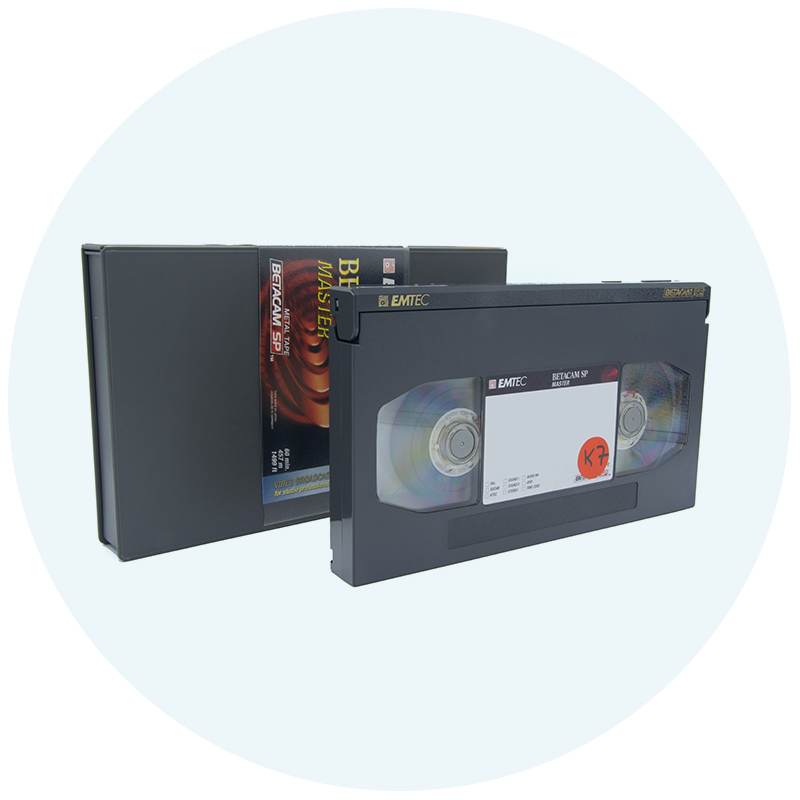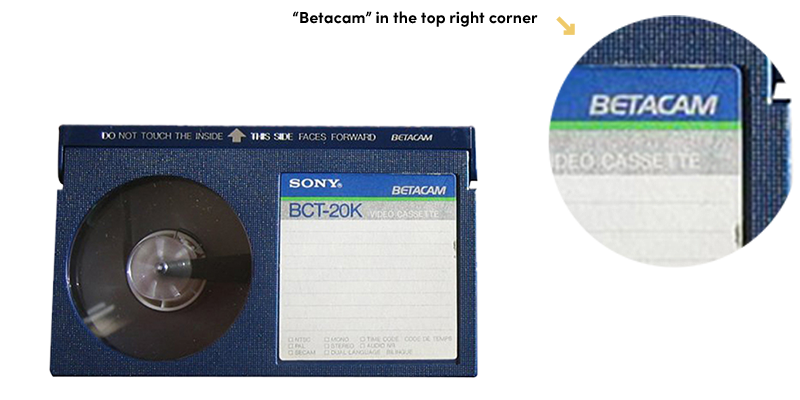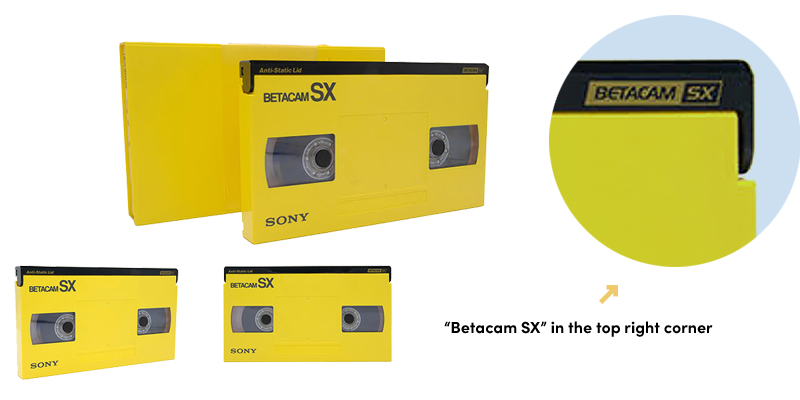Betacam vs Betamax
Betacam and Betamax cassettes are similar. But make no mistake: there is definitely a difference. The latter only has the Greek letter ‘β’ at the right side without the word ‘Betacam’. Also, the playing time and the image and audio quality differ.
Betacam SP
Betacam SP cassettes saw the light of day in 1986. The indication ‘SP’ is short for ‘Superior Performance’. The quality is remarkably better than the original Betacam cassettes. The cassette has a playing time of 30, 60 or 90 minutes. The corresponding box is often made from a black, blue or grey hard plastic.
Digital Betacam
Eleven years after the launch of the original Betacam cassettes, they came up with something new: the Digital Betacam. That is a grey, blue or blue grey analogue cassette with a digital recording signal. Many broadcasters use this carrier. Other names for Digital Betacam are: Digibeta, D-Beta and DBC.
Would you like some more explanation about the Betacam cassettes? Read all details on:








